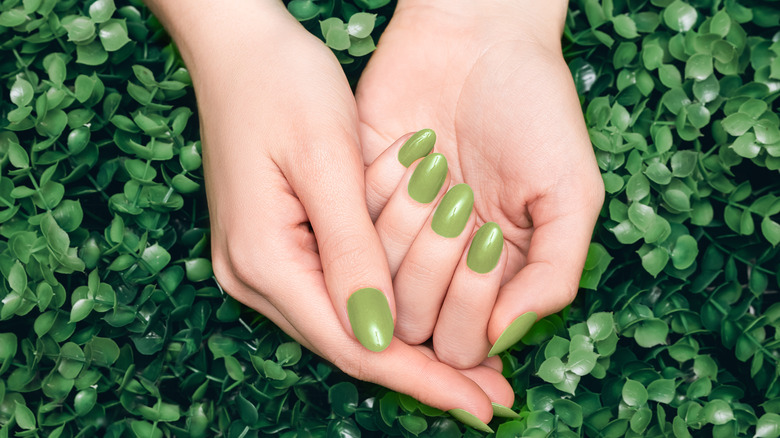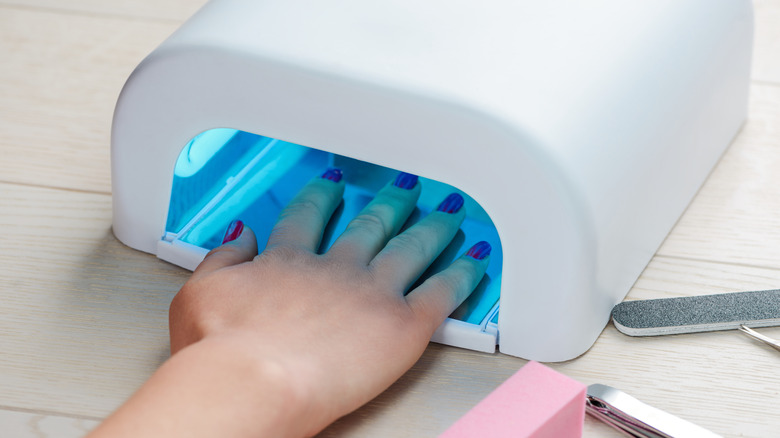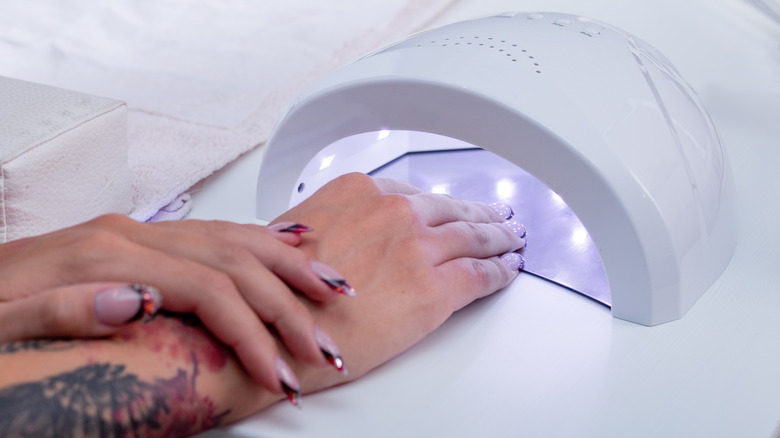The Difference Between UV And LED Light Manicure Dryers
Getting your nails done is as simple as making an appointment at your local salon. But the world of manicures can be a confusing one, particularly when you are faced with the sheer amount of choice there is with nail polish. According to L'Oréal Paris, there are seven different types of polish that are most commonly used — basic, gel, acrylic, breathable, shellac, PolyGel, and dip powder. Depending on the look you're going for, your nail technician can point you in the right direction.
But if you decide to do it yourself, each type of polish comes with its own drying time. While it can be relaxing to paint your own nails, the drying process can be frustrating, to say the least. Each polish takes different amounts of time to dry (via Martha Stewart) which means it's easy to smudge or chip the work you've painstakingly done. But you can use professional equipment, such as UV or LED light dryers, to speed up the process like nail salons do, giving you a professional experience in the comfort of your home. So what is the difference between UV and LED light manicure dryers, and how do they work?
UV light manicure dryers have been a staple in nail salons since the 1980s
The only difference between ultraviolet light (UV) and LED dryers is the wavelength of light used to dry your manicure. The UV light dryer used today was popularized by makeup artist James Giuliano in 1982 when he invented the Lamp Light — a UV lamp to dry gel polish, according to Nails Magazine. As Pro Beauty Life magazine explains, gel polish is "made up of acrylic monomers and oligomers that bond together when placed under a specific UV or LED light," as opposed to regular nail varnish or lacquer, which is made from polymers, dyes, and solvents (via BBC Science Focus). The polymers in nail varnish "form the film that's deposited on your nails," while the dye colors the varnish, and the solvents aid in the drying process. But to speed this process up, nail polish can also be dried in a UV or LED dryer.
Both dryers use UV light to cure nails, but at different wavelengths, as reported by Manucurist Paris. The problem with UV dryers is that they have the same UV wavelength used in tanning beds which are known to cause skin cancer (per How Stuff Works).
LED light manicure dryers take seconds to dry your nails
The risk of damage done to your nails depends on how often you use a UV dryer. Melissa Piliang, MD, told the Cleveland Clinic that it's a "very, very small risk" if you cure polish this way a couple of times a year. However, if you get them done once a week, then "you might want to be worried." If you are using a UV dryer to cure your polish, Piliang recommends applying sunscreen "right before the manicurist puts on the polish" to protect your skin from UV damage.
Another way to protect your skin is by using an LED dryer. While it also emits UV light, it does so with narrower wavelengths "with higher concentration and more energy," according to the beauty products website Mylee. As a result, the curing process is much quicker, too, meaning that you'll spend much less time with your hand under the UV light. According to the cosmetology platform MiladyPro, UV dryers take "anywhere from 8-10 minutes to cure gels, while LED lamps take 30-45 seconds."


